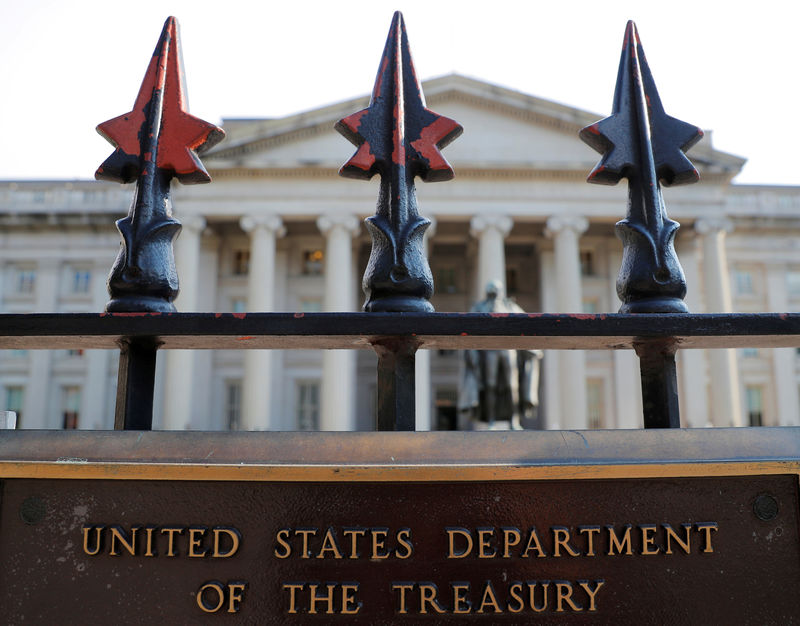(Bloomberg) -- President Joe Biden’s $1.9 trillion relief plan, plus the prospect of more stimulus later this year, is setting the stage for a shift away from historically low Treasury yields that’s likely to lead to a pickup in volatility in currency markets.
U.S. yields have marched higher even before the plan’s arrival -- offering an inkling of what may be in store. BlackRock Inc (NYSE:BLK). sees as much as $2.8 trillion in additional fiscal spending this year and the risk of a further rise in long-term rates. BNY Mellon’s John Velis says a 2% 10-year Treasury yield is possible by April as part of a “tantrum without the taper” of Federal Reserve bond purchases. And volatility in currencies is so low that it’s all but certain to go up, says Harley Bassman, creator of a widely watched gauge of Treasury-market movements.
For weeks, the million-dollar question for many investors was whether the $1.9 trillion relief plan would flow mainly through financial markets -- as the first package did -- or actually find its way more into the U.S. economy, where it could trigger changes in spending and investment magnitudes greater than the original size of the stimulus. The wave of reflation bets sweeping through global markets indicates the latter narrative is taking greater hold, suggesting such trades may have room to run.
“There’s a lot of stimulus in the pipeline that could add up to $2 trillion to $3 trillion in the end,” Velis, an FX and macro strategist at BNY Mellon (NYSE:BK), said via phone. That includes another package later this year focused on infrastructure and growth, he said.
Yields began to inch their way higher in January after Democrats appeared poised to win control of the Senate, sending the 10-year above the previously elusive level of 1%. The rate, currently around 1.37%, is now at its highest level in almost a year.
But the moves higher in yields weren’t accompanied by corresponding reactions in the foreign-exchange market, which has largely remained steady. One gauge, for instance, is the CBOE EuroCurrency Volatility Index, which tracks near-term projected volatility of the euro-dollar exchange rate. It has been on a mostly downward trend in 2021, hovering not far from the lowest levels of the past 12 years.
Rising rates are the first place that stronger growth and inflation prospects are reflected and that’s set to be followed by currency volatility. One place to watch is the yen, which has one of the lowest implied FX vols among the major currencies, and has “more room to rise,” Velis says. Meanwhile, he sees the dollar’s next direction as “somewhat ambiguous.”
‘Turbocharging the Restart’
At BlackRock Inc., the world’s biggest money manager, fresh fiscal spending is seen as “turbocharging the restart” of the pandemic-stricken U.S. economy, with further spending only ensuring more support, according to a note by Jean Boivin, head of the firm’s research arm, and others. They see a key risk of a further increase in long-term yields “as markets grapple with an economic restart that could beat expectations,” which could spark bouts of volatility. They downgraded their view on government bonds, while broadening their pro-risk stance that includes favoring stocks.
Implied volatility across a wide range of financial instruments is currently “mis-priced and too low,” said Bassman, inventor of what’s now known as the ICE (NYSE:ICE) BofA MOVE Index, Wall Street’s most widely watched benchmark for interest-rate volatility. He says the combination of fiscal and monetary policy being undertaken by the Biden administration and Fed “can create volatility in both directions.” While greater volatility in interest rates should translate into currency volatility, he said, “forecasting is now much more challenging.”
“Bond and currency markets have been pricing in an initial stimulus of $1.9 trillion that turns into transient inflation and a burst of demand that subsides,” said Thomas Graff, a portfolio manager who helps oversee $100 billion at Brown Advisory in Baltimore. “What hasn’t been priced in is a lasting, booming economy. If the fiscal thrust is enough to put the U.S. on a higher growth plane, that probably results in a higher dollar and makes currency markets more volatile.”
©2021 Bloomberg L.P.
